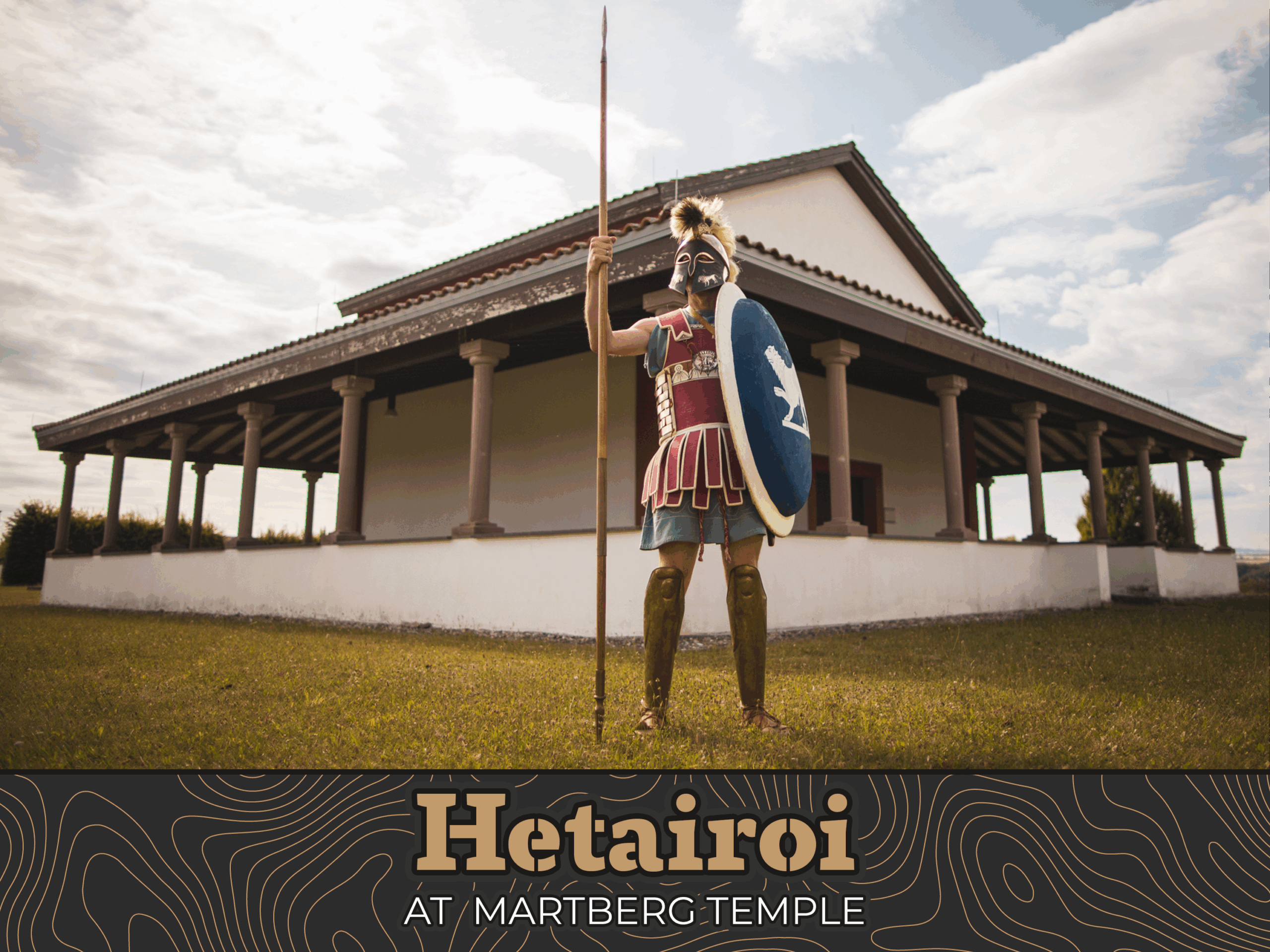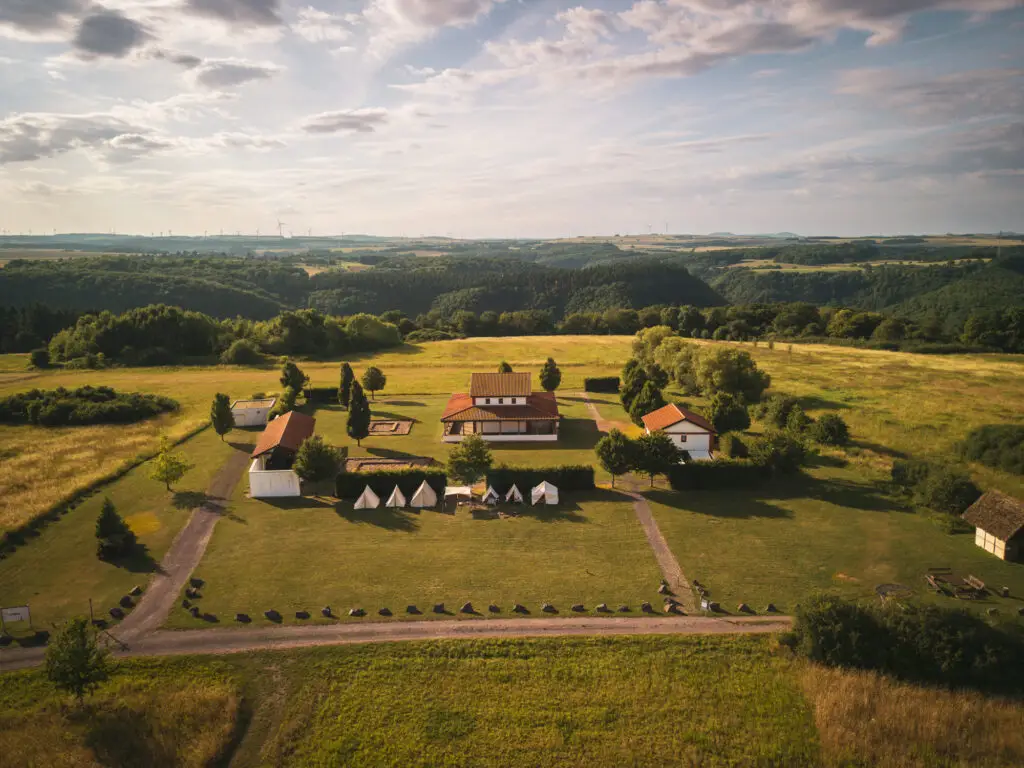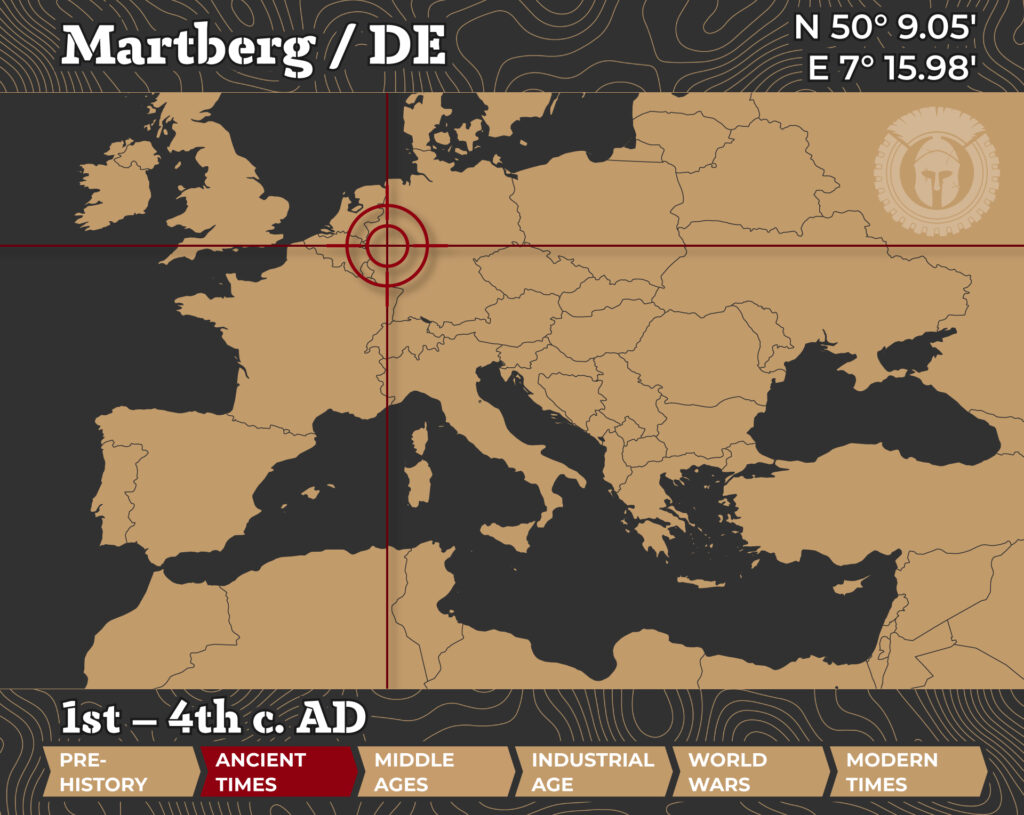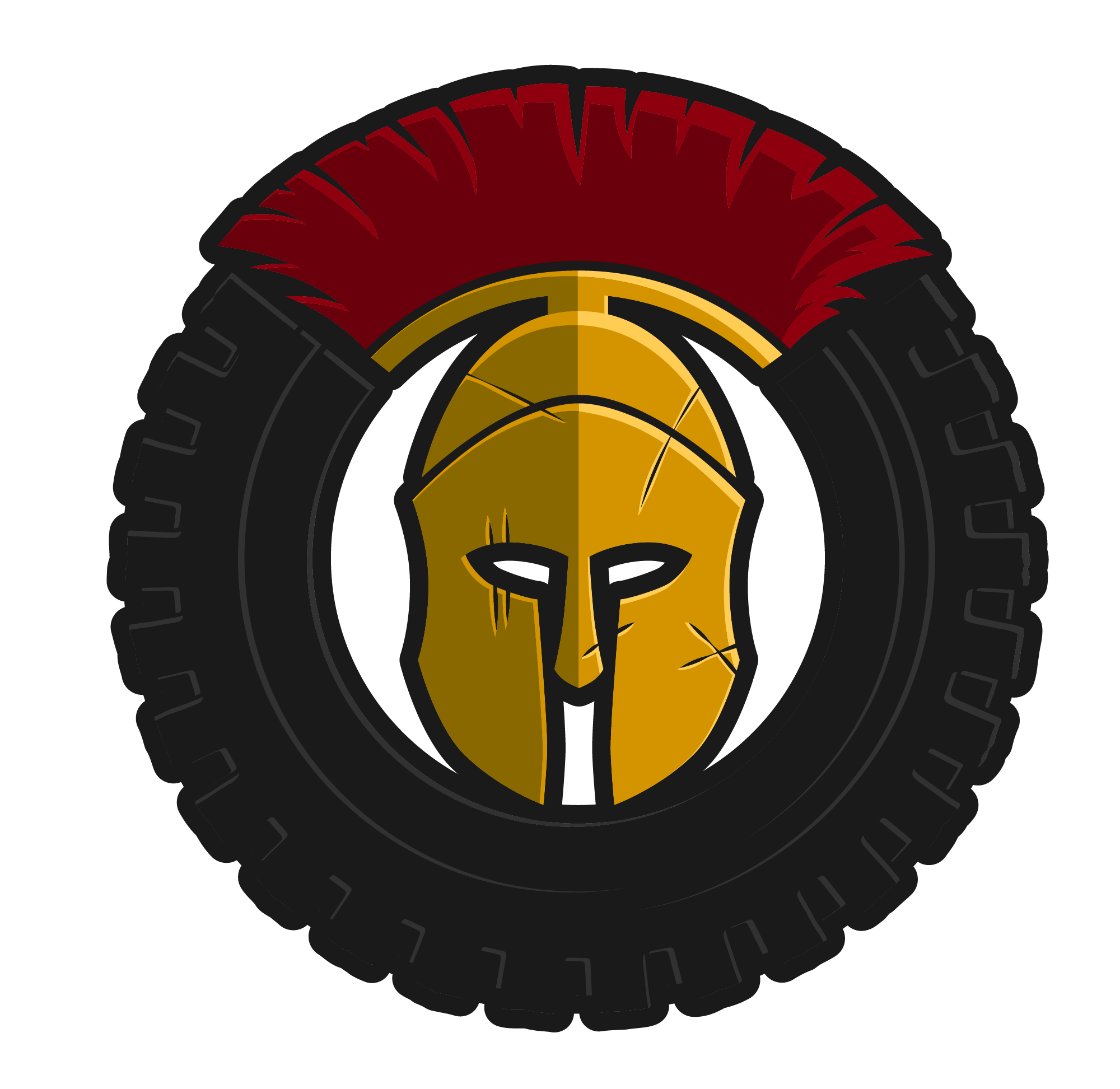
Martberg / Pommern 🇩🇪
Content
It had been a while since we last visited the Martberg. In the past, we often came for Roman-themed events, but this weekend took us even further back in time: the historical group Hetairoi e. V., dedicated to classical Greece, set up their authentic camp on the plateau. The occasion was twofold: the celebration of the group’s 20th anniversary, and a particularly dignified ceremony in memory of their long-time honorary chairman, Philippos (Kurt Schrauder).

The Martberg – Sacred Site above the Moselle
Anyone standing on the Martberg near Pommern today not only enjoys a wide view over the Moselle Valley, but is also right in the middle of one of the oldest continuously used settlement and cult sites in the region. The flat ridge was an important place of habitation and worship for many centuries. The first traces of settlement date back to the Neolithic period, with a peak during the La Tène period. From the 5th century BC onwards the Treveri (a Celtic tribe) settled here and shaped the area up to the turn of the era. In the 1st century BC, the settlement reached its greatest extent, with almost the entire 50-hectare Martberg plateau densely occupied. At the highest point of the hill, with a wide view over the surrounding landscape, stood the sanctuary of the Treveri.
With the Romanization of the region, the settlement on the Martberg was gradually abandoned in the 1st century AD. Civilian life shifted to the newly founded Vicus Cardena in the Moselle Valley, today’s town of Treis-Karden. The central cult area on the hill, however, remained in use and was further developed over the following centuries. At the center of the original Celtic sanctuary, the Romans built a new peristyle temple dedicated to Lenus Mars – a Gallo-Roman deity who combined aspects of both war and healing.
Archaeological Finds
Archaeological excavations on the Martberg have uncovered a large number of finds. Particularly striking is the quantity of votive offerings, indicating intensive religious use of the site. As early as the Late La Tène period, coins, fibulae, and weapons were deposited here, some of them ritually damaged before being offered to the sanctuary. This practice continued into Roman times and was expanded to include new forms of offerings, such as miniature pottery vessels. In total, thousands of coins and hundreds of pieces of jewelry and fibulae have been recovered.
Two inscribed stones also attest to the worship of the healing god Lenus Mars. One of them is particularly remarkable: it was dedicated by a man named Tychicos, who gave thanks for his recovery written bilingually in Latin and Greek. The inscription appears on a four-sided capital, which originally served as the base of a sundial. The semicircular dial with its scale markings was discovered during later excavations and is precisely aligned with the geographical latitude of the Martberg.
Modern Reconstructions
Today, the reconstructions allow visitors to get a sense of what the ancient sanctuary once looked like. At the center stands the large main temple, likely built in the 3rd century AD and dedicated to the god Lenus Mars. Directly in front of it is a smaller side temple, which now houses the museum café, open on weekends.
A wide portico surrounded the entire temple precinct. It marked the boundary between the sacred area and the surrounding settlement. The covered walkway offered pilgrims shelter from wind and weather, and a quiet space to walk around the sanctuary. In front of the portico, the foundation walls of another peristyle temple are still visible.
Hetairoi e. V. – Interpreting Classical Greece
Hetairoi e. V. is a historical reenactment group focusing on ancient Greece, particularly the classical period of the 5th and 4th centuries BC. The group’s name derives from the Hetairoi, the companions and elite guard of the Macedonian kings. Hetairoi e. V. concentrates on both military and civilian life in classical Greece and neighboring regions.
Topics include hoplite warfare, everyday life in ancient Greece, religion, and burial customs. Clothing, equipment, weapons, and craft techniques are reconstructed as accurately as possible based on historical sources.
Hetairoi e. V. regularly participates in museum events and historical reenactments, and this weekend set up their authentic camp on the Martberg.

How to get there?
- Martberg at Google Maps,
Coordinates: 50°10’44.6″N 7°17’10.0″E
Website: Museum Website - Hetairoi e.V. Website of the association
Sie sehen gerade einen Platzhalterinhalt von Google Maps. Um auf den eigentlichen Inhalt zuzugreifen, klicken Sie auf die Schaltfläche unten. Bitte beachten Sie, dass dabei Daten an Drittanbieter weitergegeben werden.
Mehr Informationen